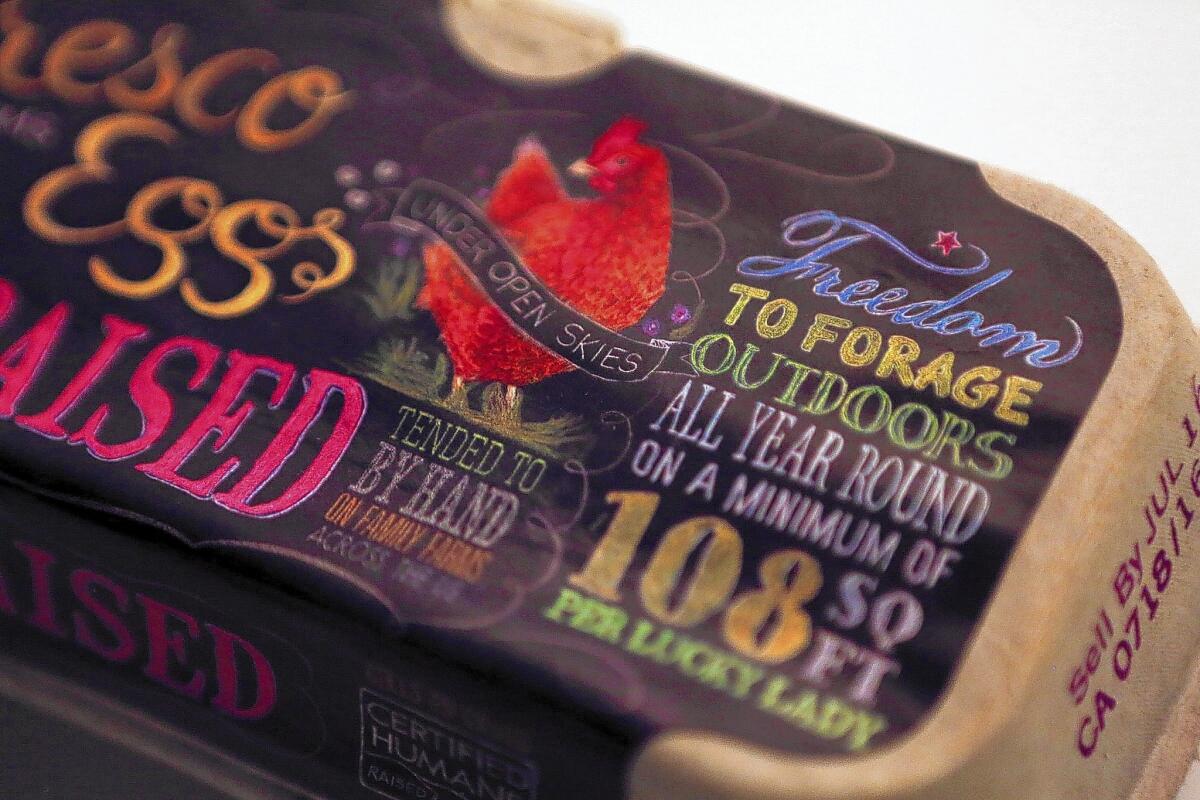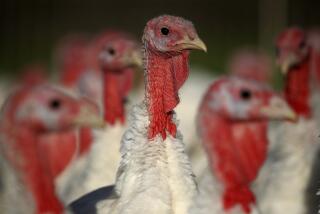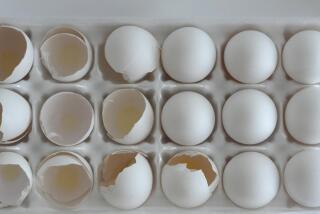Choices abound when buying eggs

Decades ago, eggs were brown or white, big or small. Now you need a scorecard to choose: cage-free, organic, humanely raised or pasture-raised — not to mention prices that can run from less than $2 to $8 for a dozen.
At the heart of the confusion? Some terms govern the way the chicken is fed, others the way it is housed, says Annie King, an animal science professor at UC Davis.
Organic, for instance, focuses on what the chicken eats. Pasture-raised speaks to how the animals live. Consumers must figure out what matters to them. “You have to take a housing definition and put it with a feeding definition if you want it all,” King says.
About a half-century ago, nearly all chickens ranged free. Farmers began moving their flocks indoors to keep them safe from diseases they were catching from wild birds and rodents, King says. As consumers began to pay attention to the way the birds were raised, some farmers moved them outdoors again.
The eggs from birds that eat organically and live outdoors are usually pricier, because of the costs of land, organic feed and disease prevention, King says.
Shoppers who buy eggs at farmers markets can generally ask the vendor how the chickens are raised. And some companies take pains to let the public know their practices. The company Vital Farms, for example, prints on the cartons that its chickens each have at least 108 square feet to roam outdoors.
::
A glossary of egg terms and claims
Terms found on egg cartons can be confusing. Here are some definitions, from from the U.S. Department of Agriculture, which regulates meat and poultry products, from Annie King, an animal science professor at UC Davis, and other sources.
Cage-free: Birds may roam freely in a room or enclosed area, with unlimited access to food and water during their production cycles.
Free range: These birds have shelter indoors with unlimited access to food, water and to the outdoors during their production cycles. The outdoor area may be fenced or covered with netting.
Grade: Grade A eggs have thick whites, which do not spread easily, making them ideal for frying. Grade B eggs usually have thinner whites, good for cakes and omelets. Grades are based on those and other qualities, such as defects.
Grass-fed: Grass-fed animals receive a majority of their nutrients from grass throughout their life. The grass-fed label does not limit the use of antibiotics or pesticides.
Humane: Multiple third-party labeling programs certify that animals were treated humanely, but the verification can vary.
Natural: All eggs are natural. This has no bearing on farm practices.
Organic: Birds are not caged, have access to the outdoors and their feed is produced without conventional pesticides or fertilizers.
Pasture-raised: There is no USDA definition.
No added hormones, or raised without hormones: Federal regulations have never permitted hormones or steroids in poultry.
Shell color: It was once “common knowledge,” but incorrect, that brown eggs were “better” than white. Shell color is based on the breed.
Yolk color: Yolks range from the palest yellow to a deep orange-yellow, depending on the chickens’ food. To some extent, King says, it’s OK to consider darker yolks healthier, because they generally contain more healthful carotenoids.
Follow me on Twitter: @mmacvean







